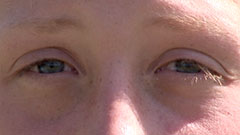Today i'm not very well to go to class. I got fever during my 32 weeks of pregnancy is very tough to handle it for me. Hope will get well soon as soon as possible.
Sorry Hj Johari, i can't attend to class today.
Monday, October 29, 2012
Monday, October 22, 2012
Week 7 : Video Editing
Video editing class was held at editing studio in our faculty. Class session today was take over by our technician, Mr Aziz who is expert in video editing.
We have introduced to new software in video editing named Avid Express. It's new experience to me in editing video in studio. Normally we just do an editing using Cyberlink Power Director.
Mr Aziz show us how to do an editing. There is some term use during editing :
We have introduced to new software in video editing named Avid Express. It's new experience to me in editing video in studio. Normally we just do an editing using Cyberlink Power Director.
Mr Aziz show us how to do an editing. There is some term use during editing :
- Betacam
- Capture
- Mark in
- Mark out
- insert
- effect
- blend
Monday, October 15, 2012
Week 6 : Video Shooting
Today class start earlier than normally because we have video shooting for convocation rehearsal at Dewan Dewan Sultan Iskandar. So, our class today officially on air from control room at the back of stage.
We have introduced to the production crew and equipment use in video shooting. In this event use 3 cameras connected to control room. Each camera will appear control by mixer.
Mixer
Display monitor
Monday, October 8, 2012
Week 5 : Lighting
Lighting is very important to produce a brilliant picture or videos. There is 3 situation in lighting :
Type of Studio Light
- Artificial Light
- Natural Light
- Natural Situation (2 hours after sunrise and 2 hours before sunset)
Type of Studio Light
- Main/key light : should be in 45° angle.
- Fill light : eye level.
- Back ground light :
- Accent light : shine the subject from the back to make the subject get away from back ground.
Monday, October 1, 2012
Week 4 : Camera Handling
White Balance Setting
White balance basically means colour balance. It is a function which gives the
camera a reference to "true white" — it tells the camera what
the colour white looks like, so the camera will record it correctly. Since white light is
the sum of all other colours, the camera will then display all colours correctly.
Incorrect white balance shows up as pictures with orange or blue tints, as demonstrated by the following examples:
Most consumer-level camcorders have an "auto-white
balance" feature, and this is how most amateurs operate. The camera performs it's own
white balance without any input from the operator. In fact, very few home-video users are
aware of it's existence. Unfortunately, the auto-white balance is not particularly
reliable and it is usually preferable to perform this function manually.
You will need:
Incorrect white balance shows up as pictures with orange or blue tints, as demonstrated by the following examples:
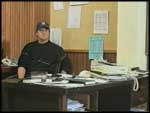 Correct colour balance |
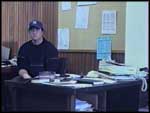 Colour balance too blue |
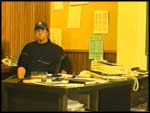 Colour balance too yellow |
You will need:
-
A camera with a manual white-balance function. There should be a "white balance" button or switch on your camera.
-
 If your camera has a filter wheel (or if you use add-on filters), make sure you are using the correct filter for the lighting conditions.
If your camera has a filter wheel (or if you use add-on filters), make sure you are using the correct filter for the lighting conditions.
-
Point your camera to a pure white subject, so that most of what
you're seeing in the viewfinder is white. Opinions vary on just how much
white needs to be in the frame - but we've found that about 50-80% of
the frame should be fine (Sony recommends 80% of frame width). The
subject should be fairly matte, that is, non-reflective.
-
Set your exposure and focus.
-
Activate the white balance by pressing the button or throwing the
switch. The camera may take a few seconds to complete the operation,
after which you should get a message (or icon) in the viewfinder.
Hopefully this will be telling you that the white balance has succeeded - in this case, the camera will retain it's current colour balance until another white balance is performed.
If the viewfinder message is that the white balance has failed, then you need to find out why. A good camera will give you a clue such as "colour temperature too high" (in which case change filters). Also try opening or closing the iris a little.
Cut Away Shots
This technique called cutaway is a shot that's usually of something other than the
current action. It
could be a different subject (eg. this cat when the main subject is
its owner), a close up of a different part of the subject (eg.
the subject's hands), or just about anything else.
The cutaway is used as a "buffer" between shots (to help the editing process), or to add interest/information.
Here is the good example to show of how cutaway shots work.
The cutaway is used as a "buffer" between shots (to help the editing process), or to add interest/information.
Here is the good example to show of how cutaway shots work.
Task for today
Before end of class, lecturer show us an example video movie made by our senior for this subject tittle "Revenge". Homework for today is, we have to discuss in our group of 3 or 4 to create short movie (about 5 to 10 minutes). For next week we need to prepare movie script. Hmmm what we want to do huh? Give us an ideas...Please! Hope we can do the best for this task.Tuesday, September 25, 2012
Week 3 : Self Practice Shot
Today me and my group members (Fadlee and Diyana) was borrow a camcoder from faculty. We have explained by our technician, Mr Rosli how to handle the camcoder.
We'll do this task during weekend to practice in video shooting. Need to try many times to get the skills.
We've try to shoot a video as our lecture shown us in class. The video was save in memory stick. I got the problem to transfer it to computer due to the memory stick cannot slot in into laptop slot. Might be need some additional device to fix it.
We'll do this task during weekend to practice in video shooting. Need to try many times to get the skills.
We've try to shoot a video as our lecture shown us in class. The video was save in memory stick. I got the problem to transfer it to computer due to the memory stick cannot slot in into laptop slot. Might be need some additional device to fix it.
Monday, September 24, 2012
Week 3 : Process of Video Production
I just joined this class this week. Last week was substitute holiday for Hari Malaysia. This course will handle by Tn Hj Johari Hasan for 1st half of course in video. The 2nd half will meet with Assoc Prof Dr Jamalludin Hj Harun for Animation part.
Today Tn Hj Johari give us lecture in 2nd week topic which is The Process of Video Production as below :
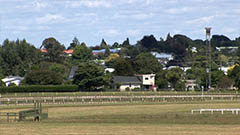
EWS (Extreme Wide Shot)
The view is so far from the subject that he isn't even visible. Often used as an establishing shot.
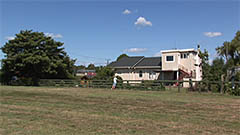
VWS (Very Wide Shot)
The subject is visible (barely), but the emphasis is still on placing him in his environment.
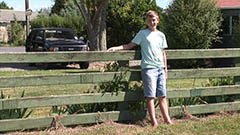
WS (Wide Shot)
The subject takes up the full frame, or at least as much as comfortably possible.
AKA: long shot, full shot.

MS (Mid Shot)
Shows some part of the subject in more detail while still giving an impression of the whole subject.

MCU (Medium Close Up)
Half way between a MS and a CU.
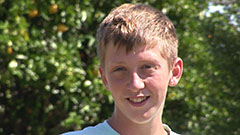
CU (Close Up)
A certain feature or part of the subject takes up the whole frame.
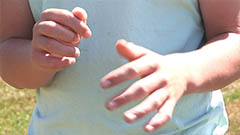
Cut-In
Shows some (other) part of the subject in detail.
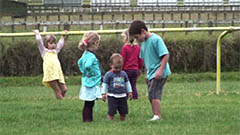
CA (Cutaway)
A shot of something other than the subject.
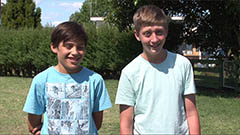
Two-Shot
A shot of two people, framed similarly to a mid shot.

(OSS) Over-the-Shoulder Shot
Looking from behind a person at the subject.
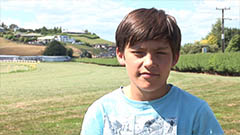
Noddy Shot
Usually refers to a shot of the interviewer listening and reacting to the subject.
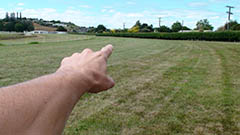
Point-of-View Shot (POV)
Shows a view from the subject's perspective.
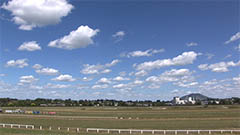
Weather Shot
The subject is the weather. Can be used for other purposes, e.g. background for graphics.
The other tutorial of shot types in film making :
Today Tn Hj Johari give us lecture in 2nd week topic which is The Process of Video Production as below :
- Pre-Production (planning, scripting, storyboarding)
- Production (shooting)
- Post-Production (editing, recording sound, audio sweetening)
- PAL short for Phase Alternating Line, is an analogue television colour encoding system used in broadcast television systems in many countries
- SÉCAM (Séquentiel couleur à mémoire, French for "Sequential Color with Memory"), is an analog color television system first used in France.
- NTSC National Television System Committee, is the analog television system that is used in most of North America, parts of South America (except Brazil, Argentina, Uruguay, and French Guiana), Myanmar, South Korea, Taiwan, Japan, the Philippines, and some Pacific island nations and territories
- HDTV High-definition television (HDTV) provides a resolution that is substantially higher than that of standard-definition television
- HDV is a format for recording of high-definition video on DV cassette tape
- CCD is charge-coupled device (CCD) is a device for the movement of electrical charge, usually from within the device to an area where the charge can be manipulated, for example conversion into a digital value.
- CMOS Complementary metal–oxide–semiconductor (CMOS) is a technology for constructing integrated circuits.
- HR Horizontal Resolution is the number of elements, dots or columns from left to right on a printed page, display screen or fixed area such as one inch.
- VR Vertical Resolution which is the number of rows, dots or lines from top to bottom.
- °K (degree Kelvin - unit for light or color temperature)
Equipment and Technology in Video Production
Shot Types
There is several type of shot to know during handling the camcoder to shot the video. This is some tutorial i got from http://www.mediacollege.com/
There is a convention in the video, film and television industries
which assigns names and guidelines to common types of shots, framing and
picture composition. The list below briefly describes the most common
shot types (click the images for more details).
Notes:
- The exact terminology varies between production environments but the basic principles are the same.
- Shots are usually described in relation to a particular subject. In most of the examples below, the subject is the boy.
- See below for more information and related tutorials.

EWS (Extreme Wide Shot)
The view is so far from the subject that he isn't even visible. Often used as an establishing shot.

VWS (Very Wide Shot)
The subject is visible (barely), but the emphasis is still on placing him in his environment.

WS (Wide Shot)
The subject takes up the full frame, or at least as much as comfortably possible.
AKA: long shot, full shot.

MS (Mid Shot)
Shows some part of the subject in more detail while still giving an impression of the whole subject.

MCU (Medium Close Up)
Half way between a MS and a CU.

CU (Close Up)
A certain feature or part of the subject takes up the whole frame.

Cut-In
Shows some (other) part of the subject in detail.

CA (Cutaway)
A shot of something other than the subject.

Two-Shot
A shot of two people, framed similarly to a mid shot.

(OSS) Over-the-Shoulder Shot
Looking from behind a person at the subject.

Noddy Shot
Usually refers to a shot of the interviewer listening and reacting to the subject.

Point-of-View Shot (POV)
Shows a view from the subject's perspective.

Weather Shot
The subject is the weather. Can be used for other purposes, e.g. background for graphics.
The other tutorial of shot types in film making :
Subscribe to:
Posts (Atom)











